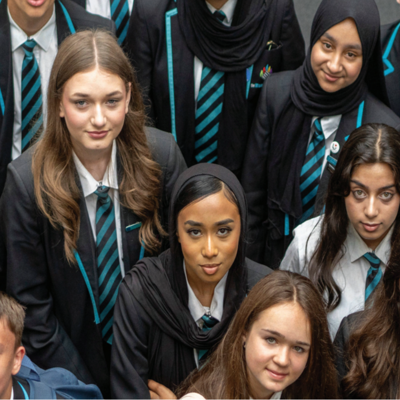What makes a great school learning platform? A guide for schools in 2025
In schools today, technology is no longer a luxury - it's an essential part of the learning process. The right school learning platform can significantly enhance teaching efficiency, deepen student engagement, and help close attainment gaps. But with a crowded market of tools and resources, it’s easy for school leaders to feel overwhelmed.
This guide aims to demystify what makes a school learning platform truly effective. From key features and platform comparisons to implementation insights and real-world examples like Access GCSEPod, you’ll get the knowledge you need to make an informed decision that benefits staff and students alike.
Why schools need learning platforms now more than ever
Over the past ten years – and particularly following the rapid digital transition driven by the pandemic – schools have been increasingly adopting digital solutions to enhance and improve teaching and learning.
Schools today face challenges like:
- Time-strapped teachers juggling planning, marking, and data analysis.
- Students with varied learning needs, including those with SEND, EAL, or who are disengaged.
- High-stakes accountability, demanding clear evidence of progress and attainment.
- Budget constraints, making return on investment more important than ever.
A good school learning platform addresses all these areas - not just digitising content, but transforming how teaching happens and how students learn.
What defines an effective school learning platform?
Let’s explore the core pillars that define a best-in-class platform.
1. High-quality, curriculum-aligned content
The heart of any platform is its content. For maximum impact, learning resources must:
- Be created by subject matter experts and experienced educators
- Align with national curriculum and exam board specifications
- Use multi-modal formats: videos, visuals, scaffolded texts, quizzes
- Be accessible: include subtitles, audio options, adjustable playback
Effective platforms break content down into manageable chunks. For example, Access GCSEPod offers 3–5-minute audiovisual Pods that help students retain information. Century Tech uses micro-lessons paired with questions that adapt in real-time based on learner response. SAM Learning offers topic-based tasks with instant feedback.
2. Integrated assessment and feedback
Assessment must be an embedded part of learning, not a bolt-on.
Top platforms feature:
- Real-time formative assessments
- Scaffolded feedback to support learners as they progress
- Exam-style questions for summative assessments
- Automated marking and analytics dashboards
GCSEPod’s Check & Challenge tool allows students to receive feedback while teachers get detailed data on misconceptions and confidence levels. Century Tech’s AI engine provides adaptive assessments, while Seneca’s quizzes reinforce retrieval through spaced repetition.
3. Meaningful data and insight
Teachers need easy access to data that informs their next steps. Good platforms:
- Track user activity and progress by topic, class, or individual
- Highlight areas for intervention
- Integrate into school systems (e.g., MIS or Power BI)
Platforms like GCSEPod provide customisable, exportable data sets. Century Tech integrates AI to recommend next topics. SAM Learning generates detailed reports at a whole school or department level, making it easier for senior leaders to evidence impact.
4. Support for personalised learning
Every learner is different. The best platforms:
- Offer diagnostic assessments to set starting points
- Use adaptive technologies to build individual learning paths
- Include revision playlists or assignments tailored to need
Seneca's smart learning algorithm adjusts recap timing to reinforce retention. Century Tech creates pathways based on performance and learning behaviours. GCSEPod allows teachers to set assignments based on exam boards, while students can build their own playlists.
5. Time-saving tools for teachers
Efficient platforms reduce admin and lesson prep time:
- Ready-to-use lessons, tasks, and assessments
- Auto-marking and progress tracking
- Seamless integration with Google Classroom or Microsoft Teams
SAM Learning lets teachers assign pre-built activities. Seneca enables class tracking for homework and revision. GCSEPod offers instant assignment creation and bulk assignment tools for MAT-wide rollouts.
Comparing popular school learning platforms
This comparison shows how GCSEPod holds strong across the board — particularly in content quality, offline access, reporting, and implementation support. However, platforms like Century Tech offer powerful AI-driven personalisation, while Seneca provides a free, engaging interface suitable for quick revision.
Platform in focus: AccessGCSEPod
Access GCSEPod is used by thousands of UK and international schools. It combines:
- Key Stage 3, GCSE, Resits, and Functional Skills
- 13,000+ short videos aligned to specifications
- 250,000+ questions and scaffolded assessments
- Advanced reporting, personalisation, and exportable insights
Key strengths
- Content built by teachers and examiners
- Used across MATs for scalable implementation
- Evidence of impact: users average 1.5 grades higher
- Accessibility: subtitles, variable playback, and offline access
It supports flipped learning, teacher-led lessons, revision, and catch-up. Diagnostic assessments generate learner-specific playlists, while teachers can assign mock-style questions, get auto-marked results, and focus their time on intervention.
Implementation training and support
Great platforms don’t just deliver content - they support cultural change. GCSEPod, for instance, provides:
- CPD sessions and webinars
- Launch plans and toolkits
- Multilingual parent guides
- Digital signage and resources to encourage usage
SAM Learning and Century Tech also offer onboarding webinars, while Seneca focuses more on self-serve models. Choose a platform that aligns with your school's appetite for support and scale.
Conclusion: Choose the school learning platform that works best for you
No single platform is perfect for every school. But the best learning platforms share core traits:
- High-quality, curriculum-aligned content
- Powerful, integrated assessment tools
- Meaningful insights and analytics
- Personalised pathways and accessibility support
- Proven impact on outcomes and workload
Whether you’re considering a free revision tool like Seneca, an AI-led platform like Century Tech, or a comprehensive solution like Access GCSEPod - be sure to choose a platform that aligns with your goals, supports your teachers, and genuinely enhances learning.
Ready to Take the Next Step?
Discover how a holistic school learning platform can change outcomes in your school.
Book your free demo of Access GCSEPod today and see why thousands of schools trust it to raise attainment, reduce stress, and personalise learning.
Further reading
People often ask...
What is a school learning platform?
A school learning platform is a digital environment that supports teaching, learning, and assessment. It allows educators to deliver content, assign homework, track progress, and provide feedback, all in one place.
How can a school learning platform improve student outcomes?
Effective school learning platforms offer personalised learning paths, instant feedback, and access to high-quality resources. Platforms like Access GCSEPod have been shown to help students achieve, on average, 1.5 grades higher than non-users.
Which is the best school learning platform for GCSE students?
Platforms such as Access GCSEPod are tailored specifically to GCSE learners, offering short video content, scaffolded assessments, and personalised playlists aligned to UK exam boards. Others like Seneca and Century Tech also offer GCSE content but with different strengths.
How do I choose the right school learning platform for my school?
Consider your school’s needs in terms of curriculum coverage, reporting, personalisation, ease of use, and implementation support. Comparing platforms side-by-side, as in the table above, helps identify the best fit for your setting.
Can school learning platforms support independent learning?
Yes. Most platforms are designed to empower students to take control of their learning. Features like diagnostic assessments, personalised pathways, and on-demand content make it easier for students to study independently.
Is teacher training required to use a school learning platform?
Some platforms offer extensive CPD and onboarding support (like GCSEPod), while others follow a self-service model. Consider how much support your staff may need when choosing a solution.
Do school learning platforms work with Google Classroom or Microsoft Teams?
Many platforms integrate with Google Classroom and Microsoft Teams. GCSEPod, for example, allows seamless assignment setting and user authentication through both systems.

 AU & NZ
AU & NZ
 SG
SG
 MY
MY
 US
US
 IE
IE





